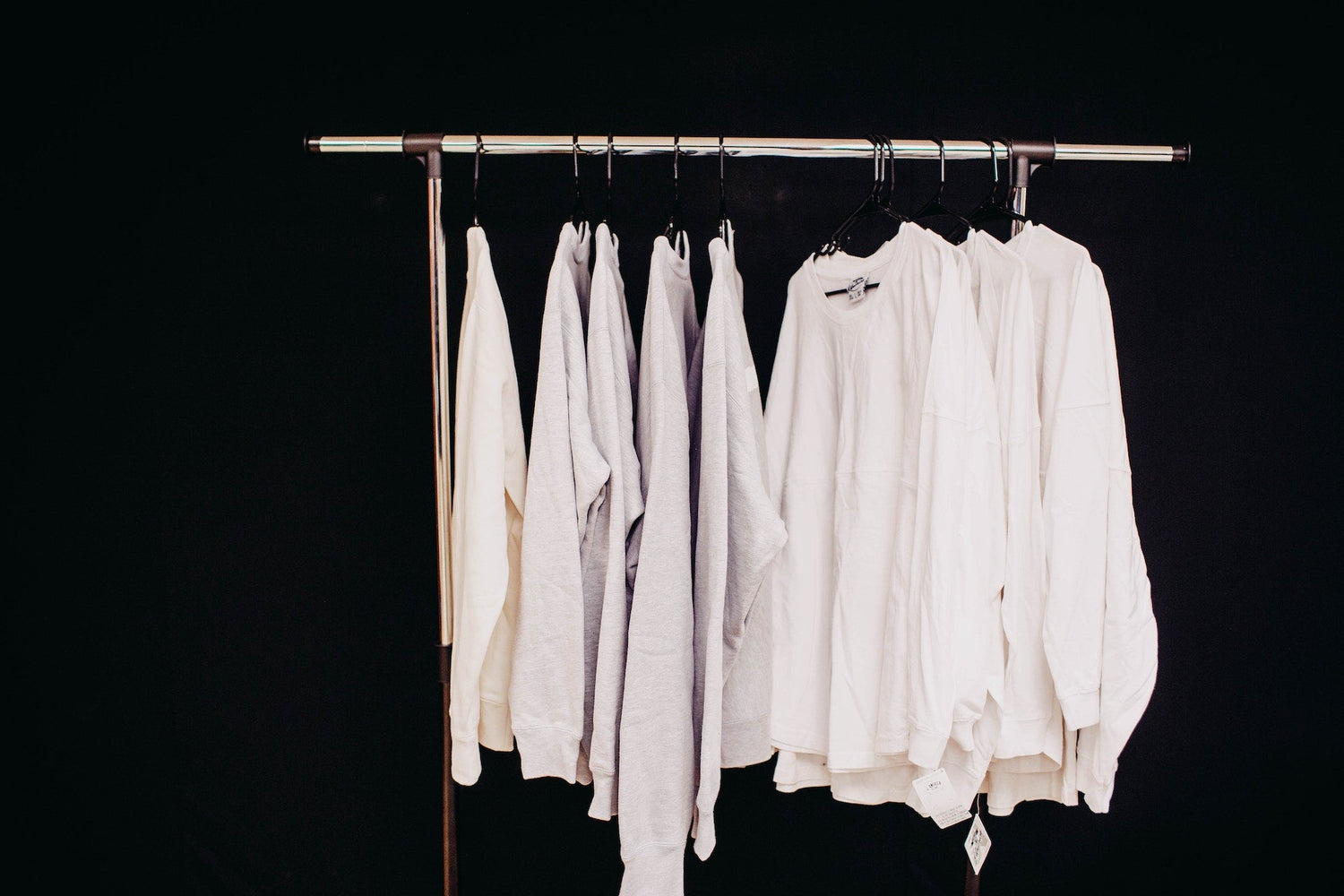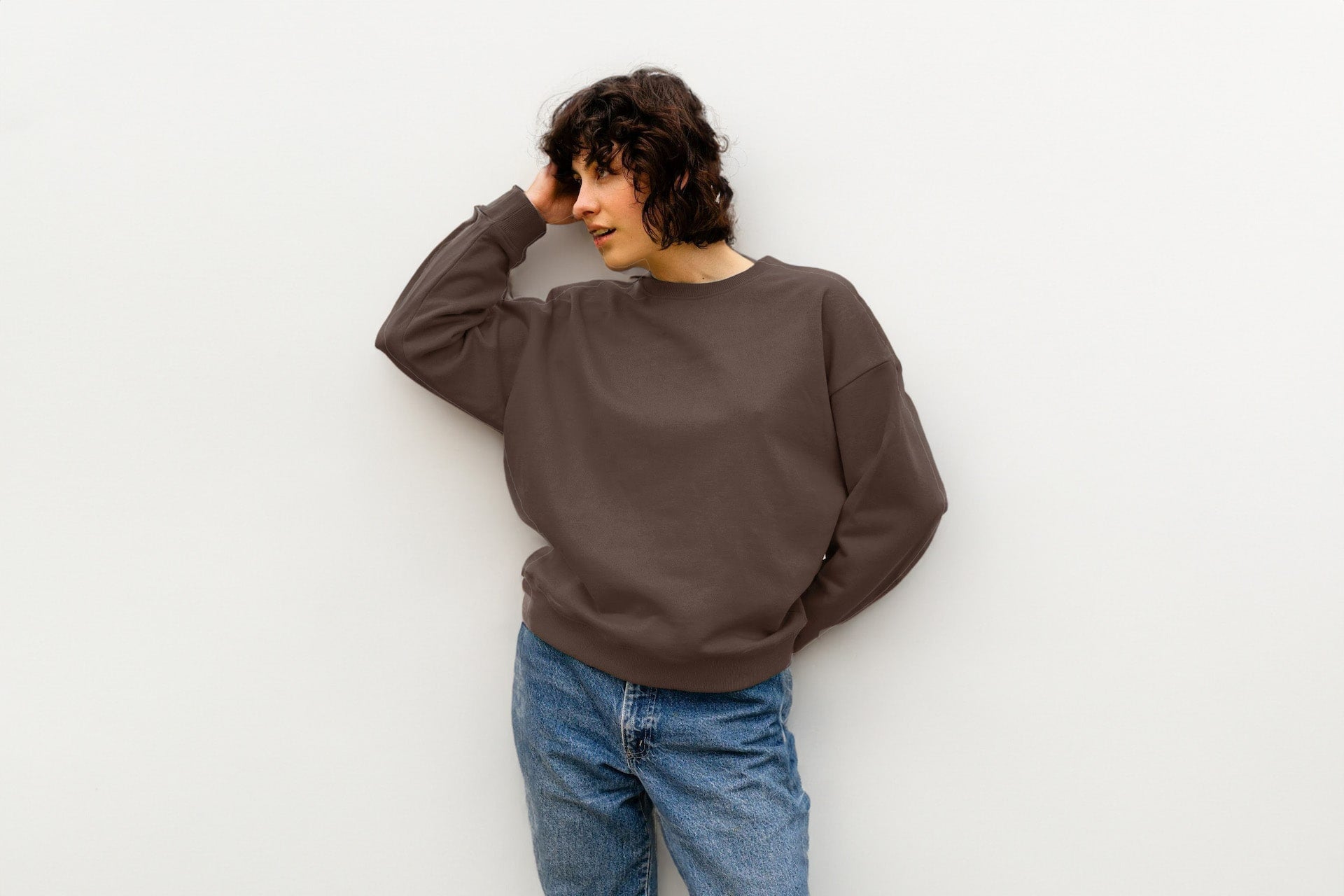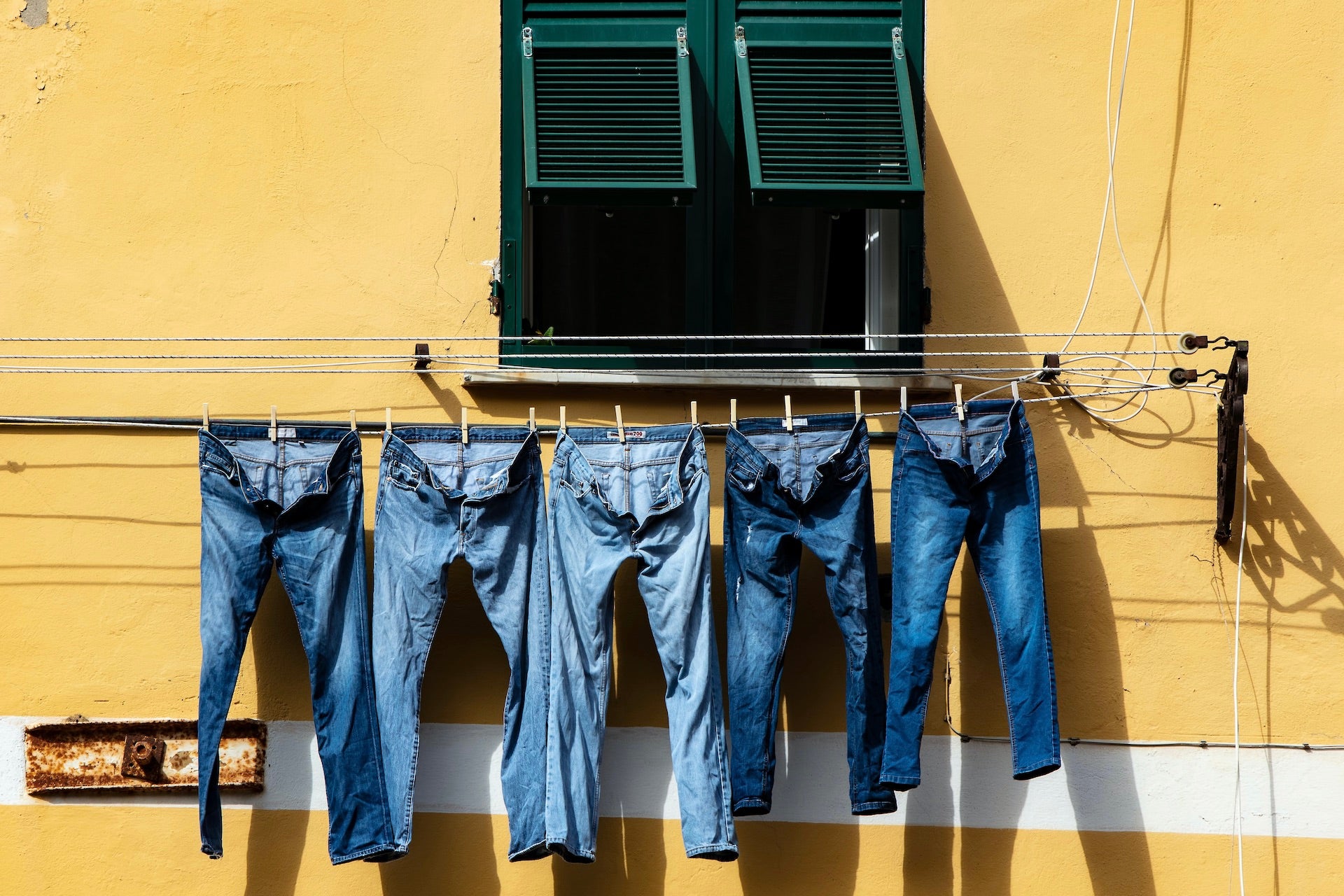There’s just something about sweater weather that feels so inviting. As the rainier and colder seasons approach, the urge to buy a cosy new sweatshirt gets strong.
Yet, in a market saturated with a gazillion types of sweaters, quality and sustainability should be prioritised over buying on impulse. So, what should the seeker consider while on the lookout for the perfect sweatshirt?

Don’t overlook the weight!
One of the most important characteristics to keep an eye out for is the sweater’s weight.
Why is this so important? Fabric weight influences the comfort of the sweatshirt, depending on the conditions. If the fabric were super thick, you’d swelter on a hot evening.
But brands don’t talk about fabric weight as often as they should. With more brands selling exclusively online, it’s hard to judge the feel of an item. And even if you get the opportunity to try before you buy, not everyone can detect which is best for the cold versus the heat, or whether the sweater will keep you warm and toasty. So when you do see the words ‘GSM’, ‘heavyweight’, ‘lightweight’, or related, it’s a sign that the product is being described in detail to help you find the perfect garment. A green flag.
But what does GSM in fabrics mean?
GSM refers to ‘grams per square metre’ and it’s used to measure the density of a fabric.
The higher the GSM, the heavier and more durable the fabric. The lower the GSM, the lighter and more breathable the fabric. The measurement helps determine the best weight of a material - depending on its function.
GSM also determines the informal classification of a garment as lightweight or heavyweight. Unsurprisingly, garments made from higher GSM fabrics are referred to as heavyweight. Lower GSM clothes are referred to as lightweight. So, you’ll want to wear a heavyweight garment on colder, winter days, and a lightweight garment on warmer, summer days.
To give you a bit more perspective, heavyweight fabrics typically include canvas, suede, and wool. Examples of heavyweight garments are denim jeans and bath towels. At the lighter end of the scale, you’ve got fabrics like linen, lace, mesh, and silk. Think summer dresses and silk bed sheets. Nevertheless, each type of fabric can also come in lightweight or heavyweight versions. It can be a relative description. Even a ‘heavyweight’ linen can be lighter than regular denim.
It’s important to note that the GSM numbers determining whether a fabric is heavyweight or lightweight will also differ based on garment type. T-shirts, for instance, have lower GSM numbers overall. When it comes to sweaters, look for the following GSM figures:
• Heavyweight sweater: 300-400 GSM
• All-season sweater: 250-300 GSM
• Lightweight sweater: 150-250 GSM
Heavyweight vs. Lightweight Cotton Sweaters
Since there are many different types of cotton, cotton comes in a range of different GSMs. It can depend on the type of cotton plant - plus the weaving, knitting, or felting process that the fibre goes through before transforming into the end fabric (i.e. corduroy, canvas, oxford, sateen, etc.).
Let’s take a closer look at each type of sweater you can find and compare some key characteristics.
 Cotton by Home of Wool
Cotton by Home of WoolHeavyweight cotton sweaters:
• are thicker and denser
• retain heat better and keep you warm
• are durable and can withstand many washes
• are best for cold weather
• range from 300-400 GSM
Heavyweight cotton sweaters tend to be more expensive than lightweight cotton sweaters since more raw material is used. But they also have a reputation for lasting longer. They’re best for wintertime, or for that person you know who always complains about being cold. Cotton reigns supreme for heavyweight sweaters due to its natural breathability, whereas synthetic materials often induce significantly more sweat.
Lightweight cotton sweaters:
• are airy and breathable
• keep you cool and stop you from getting sweaty
• are best for mildly cool temperatures
• range from 150-250 GSM
Lightweight cotton sweaters are perfect for those chilly summer evenings when you want to watch the sunset on the beach but they can also be worn as a base for layering up. They’re porous, so they’ll let air move through and won’t trap sweat in. Lightweight sweaters will be less sturdy and more ‘flowy’. They’re easier to travel with as they don’t weigh too much, giving you the perfect pullover to pack in your bag when you have a long day outside.
All-season cotton sweaters:
• are versatile and more useful to have all year round
• can be worn in various seasons
• are ideal for the transition between the extreme cold and heat
• range from 250-300 GSM
If you’re looking for a go-to sweater that you can wear throughout the year, an all-season sweater with a GSM range of 250-300 is your best bet. With this fabric weight, you’ll be warm in mild temperatures and able to layer up for more extreme temperatures. If you fancy an oversized fit, you can layer with a lightweight sweater underneath - or if a standard fit’s more your thing, wear a jacket over the top.
Why so much cotton?
You might be wondering, why are we banging on about cotton?
Well, organic cotton is what we use, exclusively, but cotton is also by far the most popular fabric for sweatshirts. With good reason. Cotton is a breathable fabric, so less likely to trap moisture - especially in heavyweight form. And when it comes to lightweight sweaters, cotton is an ideal material that provides breathability for your day-to-day as well as for sports. Not to mention that it’s soft, absorbent, non-transparent, and affordable.
Cotton is also far easier to maintain and wash than fabrics like cashmere or wool. Nevertheless, some other materials besides cotton are also excellent for lightweight sweaters, such as linen and lyocell. Lyocell in particular is known as a top choice for lightweight garments because of its high durability, despite its graceful lightness. It’s also one of the most sustainable fabrics out there.
Lyocell is nowhere near as popular as cotton for sweatshirts, though, but it’s on the rise. Mind you, cotton isn’t going anywhere either.

Sweaters at POMP
Here at POMP, we offer a range of sweaters, designed to be worn all year round. We use a versatile 300 GSM, 100% certified organic cotton fabric to guarantee durability, sustainability, and high quality. Our focus is on timeless organic basics in a range of lovely colours.
 A 300 GSM sweater made from 100% organic cotton.
A 300 GSM sweater made from 100% organic cotton.
And for those who want to go the extra yard for sustainability, we offer the same sweater in a recycled version - made from 50% post-consumer remanufactured organic cotton and 50% virgin organic cotton. You can even send it back for recycling once you’re done using the QR code on the label.
 A 300 GSM sweater made from 50% recycled organic cotton and 50% virgin organic cotton.
A 300 GSM sweater made from 50% recycled organic cotton and 50% virgin organic cotton.




